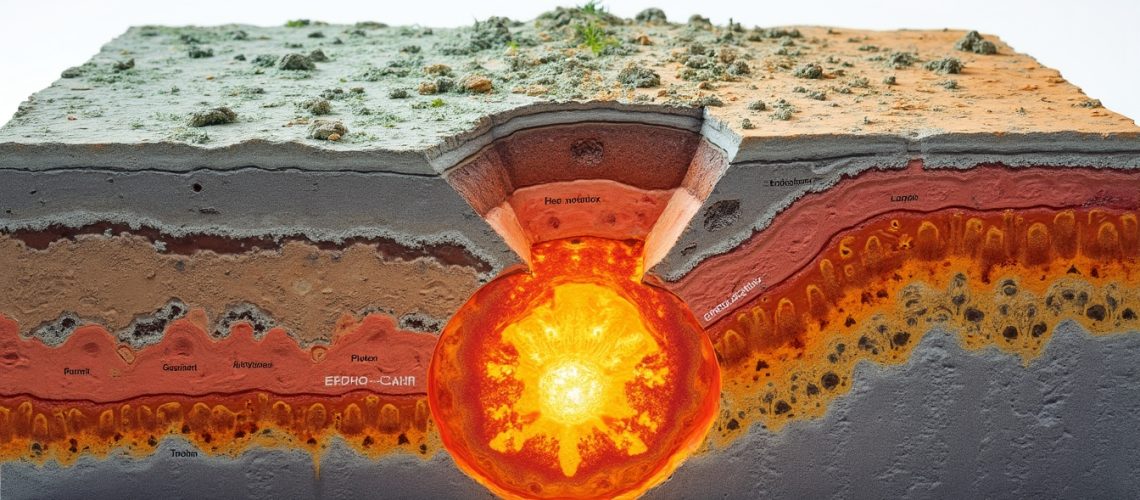What is a Scarn Zone in Geological Formations?
A scarn zone represents a fascinating geological phenomenon arising from the intricate process of metasomatism, where complex chemical interactions transform rock compositions at the boundary between intrusive igneous bodies and carbonate sedimentary rocks. These unique geological formations emerge through remarkable metamorphic processes that fundamentally alter mineral structures and create economically significant mineral deposits.
The formation of scarn zones involves intense thermal and chemical interactions between hot, mineral-rich magmatic fluids and surrounding rock environments. Discoveries in mineral composition changes play a critical role in understanding these transformative geological processes.
How Do Scarns Develop?
Scarn formation begins when magma intrudes into surrounding rock formations, releasing hydrothermal fluids containing dissolved minerals and metals. These hot fluids migrate through fractures and porous rock structures, triggering complex chemical reactions that progressively replace original rock minerals with new, high-temperature mineral assemblages.
The metasomatism process fundamentally alters rock chemistry, creating distinctive mineral zones characterised by unique compositions and textures. Geological settings like porphyry systems provide critical contexts for understanding these remarkable geological transformations.
What Minerals Characterise Scarn Zones?
Scarn zones exhibit remarkable mineral diversity, typically containing:
- Garnet varieties (andradite, grossular)
- Pyroxene minerals (diopside, hedenbergite)
- Wollastonite
- Magnetite
- Chalcopyrite
- Sphalerite
These minerals emerge through progressive metasomatic stages, reflecting the complex chemical interactions between magmatic fluids and host rocks.
Economic Significance of Scarn Zones
Economic significance of ore deposits makes scarn zones particularly valuable for mineral exploration. These geological formations frequently host substantial deposits of:
- Copper
- Gold
- Tungsten
- Rare earth elements
Their unique mineralogical characteristics make them prime targets for mining strategies and exploration targets.
Geological Contexts and Formation Factors
Scarn zones typically develop in specific geological environments, including:
- Convergent plate boundaries
- Regions with significant volcanic activity
- Areas with complex plutonic intrusions
Critical factors influencing scarn formation include:
- Host rock composition
- Intruding magma chemistry
- Fluid dynamics
- Temporal geological scales
Notable Scarn Zone Examples
Remarkable scarn zone examples worldwide include:
- Bingham Canyon, Utah (copper-gold deposits)
- Pine Creek, California (tungsten deposits)
- Grubber, Indonesia (copper-gold mineralisation)
Conclusion: Geological Marvels with Economic Potential
Scarn zones represent extraordinary geological phenomena demonstrating the Earth’s complex mineralogical transformation processes. Their unique formation mechanisms and remarkable mineral assemblages make them critical targets for geological research and mineral exploration.
Understanding these intricate geological systems provides invaluable insights into the Earth’s dynamic chemical interactions and potential economic mineral resources.
Ready to Discover the Next Big Mineral Find?
Explore the world of scarn zones and elevate your investing potential with Discovery Alert’s real-time notifications on significant ASX mineral discoveries. Dive into AI-driven insights and see how these geological marvels can enhance your strategy with a free 30-day trial.







